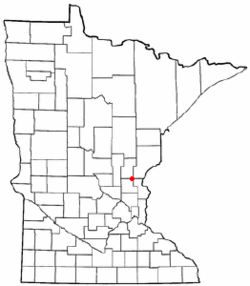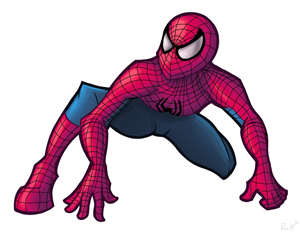World Wide Web Day 2024 is on Thursday, August 1, 2024: What is World Wide Web?
Thursday, August 1, 2024 is World Wide Web Day 2024. Definitions Wiki-How

What is World Wide Web?
The World Wide Web (commonly abbreviated as "the Web") is a system of interlinked hypertext documents accessed via the Internet. With a Web browser, one can view Web pages that may contain text, images, videos, and other multimedia and navigate between them using hyperlinks.
Using concepts from earlier hypertext systems, the World Wide Web was begun in 1989 by English scientist Tim Berners-Lee, working at the European Organization for Nuclear Research (CERN) in Geneva, Switzerland. In 1990, he proposed building a "web of nodes" storing "hypertext pages" viewed by "browsers" on a network,and released that web in 1992. Connected by the existing Internet, other websites were created, around the world, adding international standards for domain names & the HTML language. Since then, Berners-Lee has played an active role in guiding the development of Web standards (such as the markup languages in which Web pages are composed), and in recent years has advocated his vision of a Semantic Web.
The World Wide Web enabled the spread of information over the Internet through an easy-to-use and flexible format. It thus played an important role in popularising use of the Internet, to the extent that the World Wide Web has become a synonym for Internet, with the two being conflated in popular use.
History
The underlying ideas of the Web can be traced as far back as 1980, when, at CERN in Switzerland, Sir Tim Berners-Lee built ENQUIRE (a reference to Enquire Within Upon Everything, a book he recalled from his youth). While it was rather different from the system in use today, it contained many of the same core ideas (and even some of the ideas of Berners-Lee's next project after the World Wide Web, the Semantic Web).
In March 1989, Berners-Lee wrote a proposal which referenced ENQUIRE and described a more elaborate information management system. With help from Robert Cailliau, he published a more formal proposal (on November 12, 1990) to build a "Hypertext project" called "WorldWideWeb" (one word, also "W3") as a "web of nodes" with "hypertext documents" to store data. That data would be viewed in "hypertext pages" (webpages) by various "browsers" (line-mode or full-screen) on the computer network, using an "access protocol" connecting the "Internet and DECnet protocol worlds".
The proposal had been modeled after EBT's (Electronic Book Technology, a spin-off from the Institute for Research in Information and Scholarship at Brown University) Dynatext SGML reader that CERN had licensed. The Dynatext system, although technically advanced (a key player in the extension of SGML ISO 8879:1986 to Hypermedia within HyTime), was considered too expensive and with an inappropriate licensing policy for general HEP (High Energy Physics) community use: a fee for each document and each time a document was charged.
A NeXT Computer was used by Berners-Lee as the world's first Web server and also to write the first Web browser, WorldWideWeb, in 1990. By Christmas 1990, Berners-Lee had built all the tools necessary for a working Web: the first Web browser (which was a Web editor as well), the first Web server, and the first Web pages which described the project itself.
On August 6, 1991, he posted a short summary of the World Wide Web project on the alt.hypertext newsgroup This date also marked the debut of the Web as a publicly available service on the Internet.
The first server outside Europe was set up at SLAC in December 1991.
The crucial underlying concept of hypertext originated with older projects from the 1960s, such as the Hypertext Editing System (HES) at Brown University--- among others Ted Nelson and Andries van Dam--- Ted Nelson's Project Xanadu and Douglas Engelbart's oN-Line System (NLS). Both Nelson and Engelbart were in turn inspired by Vannevar Bush's microfilm-based "memex," which was described in the 1945 essay "As We May Think".
Berners-Lee's breakthrough was to marry hypertext to the Internet. In his book Weaving The Web, he explains that he had repeatedly suggested that a marriage between the two technologies was possible to members of both technical communities, but when no one took up his invitation, he finally tackled the project himself. In the process, he developed a system of globally unique identifiers for resources on the Web and elsewhere: the Uniform Resource Identifier.
The World Wide Web had a number of differences from other hypertext systems that were then available. The Web required only unidirectional links rather than bidirectional ones. This made it possible for someone to link to another resource without action by the owner of that resource. It also significantly reduced the difficulty of implementing Web servers and browsers (in comparison to earlier systems), but in turn presented the chronic problem of link rot. Unlike predecessors such as HyperCard, the World Wide Web was non-proprietary, making it possible to develop servers and clie

difference between internet and world wide web?
The Difference between the World Wide Web and the Internet
People now talk about the Web more than they talk about the Internet. The World Wide Web and the Internet are not the same thing — the World Wide Web (which we call the Web because we're lazy typists) lives "on top of" the Internet. The Internet's network is at the core of the Web, and the Web is like an attractive parasite that requires the Net for survival.
The Web is a bunch of "pages" of information connected to each other around the globe. Each page can be a combination of text, pictures, audio clips, video clips, animations, and other stuff. (People add new types of other stuff every day.) What makes Web pages interesting is that they contain hyperlinks, usually called just links because the Net already has plenty of hype. Each link points to another Web page, and, when you click a link, your browser fetches the page the link connects to. (Your browser is the program that shows you the Web.)
The other important characteristic of the Web is that you can search it — all ten billion or so pages. For example, in about ten seconds, you can get a list of Web pages that contain the phrase domestic poultry or your own name or the name of a book you want to find out about. You can follow links to see each page on the list to find the information you want.
Each page your browser gets for you can have more links that take you to other places. Pages can be linked to other pages anywhere in the world so that when you're on the Web, you can end up looking at pages from Singapore to Calgary, or from Sydney to Buenos Aires, all faster than you can say "Bob's your uncle," usually. Most of the time, you're only seconds away from any site, anywhere in the world. This system of interlinked documents is known as hypertext.
Links can create connections that let you go directly to related information. These invisible connections between pages are like the threads of a spider web — as you click from Web page to Web page, you can envision the Web created by the links. What's so remarkable about the Web is that it connects pieces of information from all around the planet, on different computers and in different databases (a feat you would be hard pressed to match with a card catalog in a brick-and-mortar library).
Every Web page has a name attached to it so that browsers, and you, can find it. The name of this naming convention: URL, or Uniform Resource Locator. Every Web page has a URL, a series of characters that begins with http://. (Pronounce each letter, "U-R-L" — no one says "earl.")

Who invented the World Wide Web?
WorldWideWeb was the world's first web browser and WYSIWYG (What you see is what you get) HTML editor. It was introduced on February 26, 1991, by Tim Berners-Lee, and ran on the NeXTSTEP platform. It was later renamed Nexus to avoid confusion with the World Wide Web, also created by Berners-Lee.
WorldWideWeb was the first program which used not only the common File Transfer Protocol but also the Hypertext Transfer Protocol, invented by Berners-Lee in 1989. At the time it was written, WorldWideWeb was the only way to view the Web.
Berners-Lee wrote WorldWideWeb in Objective-C on a NeXT computer during the second half of 1990. He was working for CERN at this time, simultaneously writing the first web server, called httpd, as well as various other bits of related software. The first successful build was completed on Christmas Day, 1990, and successive builds circulated among Berners-Lee's colleagues at CERN before being released to the public (by way of Internet newsgroups) in August 1991. By this time several others, including Bernd Pollermann, Robert Cailliau, Jean-François Groff, and graduate student Nicola Pellow (who wrote the line-mode browser) were involved in the project.
Berners-Lee and Groff later adapted many of WorldWideWeb's components into the C programming language, creating the libwww API.
By 1993, other browsers, such as NCSA/Mosaic, had replaced the WorldWideWeb program. Those involved in its creation had moved on to other tasks, such as defining standards and guidelines for the further development of the World Wide Web - e.g. HTML, various communication protocols, and so on.
On April 30, 1993, the CERN directorate released WorldWideWeb into the public domain, and several versions of the software are still available to download from evolt.org's browser archive

















